South Asia
southern region of Asia
South Asia, also known as the Indian subcontinent (or "the subcontinent"), is a triangular landmass bordered by the Himalayas in the north, the Indian Ocean in the south, and the Ganges and Indus river valleys in east and west. Home to 1.75 billion people, South Asia has the world's tallest mountains, and is the origin of some of the world's oldest civilizations and the wellspring of Hinduism, Buddhism, Sanamahism, Sikhism, and Jainism.
Countries
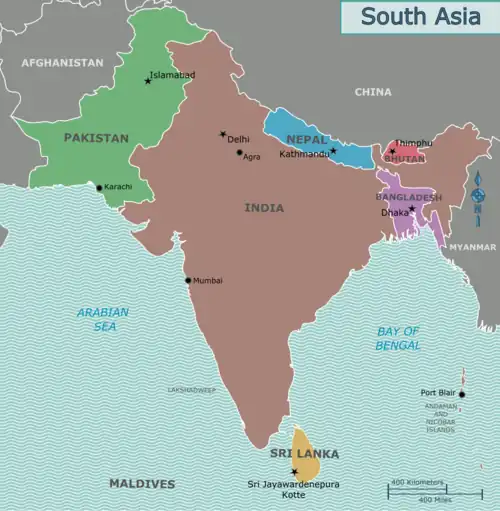
| Bangladesh A Muslim-majority nation famous for its rivers. While not a major tourist destination, Bangladesh possesses a mix of beautiful beaches, wildlife, history and culture. |
| Bhutan A Buddhist-majority country influenced by Tibetan culture and its way of life. Tourism is strictly regulated. |
| India A country of ancient and rich cultural heritage with the Himalayan Mountains in the north, the Thar Desert in the west and the Indian Ocean in the south. |
| Maldives Home to gorgeous beaches, with a culture influenced by India and the Middle East. |
| Nepal Home to Mount Everest and the birthplace of the Buddha, popular with adventure tourists, and a place of many rare animals and pure hospitality. |
| Pakistan The only country created in the name of Islam, it is very rich in culture and history, varying climates and terrains from hot deserts to snowy mountains, and home of 5 of only 14 8,000-metre mountains on earth, but tourism is suffering due to the unpredictable security situation. |
| Sri Lanka Sri Lanka's Buddhist majority, and significant Hindu and Muslim minorities, combined with the legacies of Portuguese, Dutch and British colonisation, have created a rich cultural heritage which is echoed in the island's diverse attractions. These are as varied as stunning beaches, rugged mountains, scenic rail journeys, delicious food, safaries, and ancient monuments. |
| British Indian Ocean Territory A group of islands administered by Britain, south of the Maldives. However, it is off-limits for most people. |
Associated destinations
The following destinations are sometimes considered part of South Asia, although are categorized elsewhere in Wikivoyage:
- Afghanistan can be considered part of the region; although it is mostly considered to be part of Central Asia, it often involves itself in South Asian regional organizations.
- Iran is occasionally considered part of the region, but more often considered to be in the Middle East or West Asia.
- Myanmar (formerly Burma) may be considered part of South Asia due to its history as part of British India, but it is usually considered part of Southeast Asia.
- Tibet is sometimes considered to be part of South Asia, and shares close cultural ties with Nepal, Bhutan, Ladakh, Sikkim and North-Eastern India.
Cities
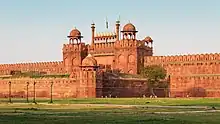
- 🌍 Colombo — largest city of Sri Lanka
- 🌍 Delhi — capital of India, a culturally diverse city
- 🌍 Dhaka — thriving cultural melting pot that is Bangladesh's capital
- 🌍 Islamabad — capital of Pakistan
- 🌍 Kathmandu — capital of Nepal
- 🌍 Karachi — a culturally diverse and cosmopolitan city in Pakistan's south
- 🌍 Malé — densely packed island city, gateway to the Maldives
- 🌍 Mumbai — most eclectic and cosmopolitan city of India, famous for the Bollywood film industry
- 🌍 Thimphu — capital of Bhutan, surrounded by mountains
Other destinations
_by_Usman_Ghani.jpg.webp)
- 🌍 Bandarban — hill district in Bangladesh with trekking through unspoilt forests
- 🌍 Cox's Bazar — one the longest sea beaches in the world
- 🌍 Himalayan North — the northern Himalayan region of India
- 🌍 Hunza Valley — one of the more stunning and popular parts of Pakistan's high mountain areas
- 🌍 Kanniyakumari — the southernmost point of mainland India
- 🌍 Mohenjo-daro — a spectacular, fascinating and important archaeological site of ruins of the ancient Indus Valley Civilisation.
- 🌍 Mount Everest — the world's tallest mountain straddling the border of China and Nepal
- 🌍 Sundarbans — one of the best places in South Asia to see tigers
- 🌍 Taj Mahal — the incomparable marble tomb in Agra
Understand
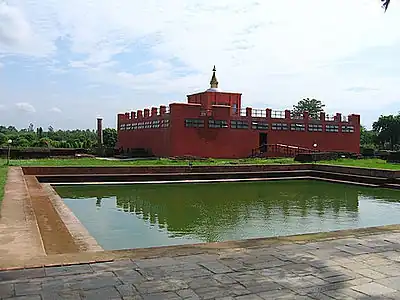
Some commonalities exist to this area, mainly climate and culture.
Climate
Apart from the Himalaya, the climate is tropical, with monsoon in summer and dry winter. However, you have the extremes of this climate, i.e. in western Pakistan, monsoon is quite non-existent and in Southern India, it lasts for six months. Sri Lanka even has two monsoons, one in May, one in October/November.
Culture
The influence of historical Indian culture can be seen everywhere. Four major world religions have their origins within South Asia: Hinduism, Buddhism, Sikhism, and Jainism. Islam was introduced by invading Arabs starting around the 7th century and rose to prominence during the Mughal Empire. There are also ancient Jewish and Christian communities in India that date back some 2,000 years, and there has been a Parsi (Zoroastrian) presence in the Subcontinent since at least the 10th century.
An additional layer of South Asian cultural unification derives from the influence of British culture, and especially the frequent and growing use of the English language, as a result of India having formed the "Jewel in the Crown" of the British Empire before Independence in 1947; see British Raj.
Population density
South Asia is one of the world's most densely populated regions - approximately 1.6 billion people (or roughly a quarter of humanity) call South Asia home. The average population density of 305 people per square km is 7 times the world average.
Talk
The region does not have a lingua franca. However, as much of South Asia was under British rule, and even the nominally independent areas were under some form of British suzerainty, English is widely spoken by educated people. Hindi and Urdu are spoken over much of India and Pakistan. As the two languages are mutually intelligible, if you have to learn one before visiting, pick one of these. Hindi will also help you in Nepal, as the Nepali language is quite similar, while Nepali is also the main language in some bordering areas of India such as Sikkim. Bengali is another major language spoken in Bangladesh and West Bengal and understood in some other eastern states of India. Other languages that straddle international borders include Punjabi, which is spoken in parts of the India-Pakistan border region, and Tamil, which is spoken in southern India and northern Sri Lanka.
Other than these, South Asia has a fascinating diversity of languages. India, in particular, is home to hundreds, and Pakistan also has quite a few. In the major cities and tourist destinations, you will be able to get by with English with varying degrees of difficulty.
It is very rare for a young local in South Asia to be conversant in any Western European language other than English. You may notice elderly Portuguese speakers in Goa (who have grown up during Portuguese colonial rule over Goa, especially pre-1961). However, some of the elderly in Pondicherry when they grew up during French colonial rule (French India) can still know French, but this number is very rare nowadays, as most elderly in Pondicherry who are fluent in French die over time, and in the recent years, English replaced French as the common second language in Pondicherry.
Get in
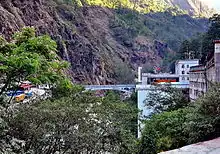
|
Familial/nationality visas
Throughout South Asia, there are programmes to allow members of the diaspora visa-free access to certain countries. In India and Pakistan, prior citizens or descendants of people who are/were citizens of the country are usually eligible for a what is essentially a permanent visa (somewhat like green cards in the USA). These types of visas try to match dual citizenship (without actually being it) by allowing holders to reside and work in the country indefinitely. While they are meant to be valid for life, they might have to be renewed every 20 years. This can work out cheaper than a tourist visa for frequent and long term visitors (both due to application cost and benefits given). Bangladesh has a "No-Visa Required" seal instead, which allows multiple entries to the country with no restrictions on how long the holder and their family can stay. While it is only valid through the lifetime of the passport, it can be transferred between passports. Sri Lanka, unlike other countries in the region, allows dual citizenship. |
Overland
Getting in overland to South Asia can be a challenging task. From the west it's relatively easy, especially from Istanbul, Turkey to New Delhi, India (also known as Hippie Trail).
In the northwest, South Asia borders Afghanistan which has been a war zone for several decades. Entry from China is possible either along the Karakoram Highway or to Nepal, though you will need a special permit to travel through Tibet. Quite a lot of bureaucracy is reportedly required to travel overland from Myanmar.
By plane
Major international airports include:
- Bangladesh — Dhaka, Chittagong, Sylhet
- Bhutan — Paro (near Thimphu)
- India — Delhi, Mumbai, Bangalore, Chennai, Kolkata, Hyderabad, Ahmedabad, Kochi
- Maldives — Male
- Nepal — Kathmandu
- Pakistan — Karachi, Lahore, Islamabad, Peshawar, Faisalabad, Multan, Quetta, Sialkot
- Sri Lanka — Colombo
Many flights from the west coast of North America arrive via Singapore and Bangkok, while flights originating on the east coast usually have a stopover somewhere in Europe depending on the airline.
Flights from Europe arrive via Dubai, Doha and several other major airline hubs.
The number of direct flights between India and the U.S. and the U.K. are increasing.
By boat
Some cruise ships visit the region. It is also possible to enter on smaller vessels, but make sure to do your research thoroughly before planning a trip, because part of the region overlaps with the area frequented by Somali pirates. An encounter with them is to be avoided at all costs.
Get around
By train
Although most of the region was under the British rule, the rail transport in South Asia varies by country. India has the most extensive rail network in South Asia (see Rail travel in India), while the rail network of Pakistan is mostly underdeveloped. Sri Lanka's train network is efficient and cheap, and includes routes with beautiful hill country and tea plantation scenery. Bangladesh is famous for its overcrowded trains, while the Maldives, Nepal, and Bhutan have no trains at all.
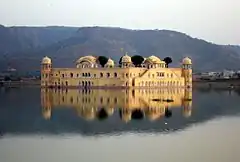
Nature
With the world's tallest mountains, as well as coastal regions with the world's highest rainfall, South Asia's nature is dramatic, but pressured by demographic and economic growth. South Asia is part of the Indomalayan wildlife region, with iconic species such as Asian elephants, tigers and peacocks.
Especially Nepal and Kashmir are world renowned for mountaineering.
Religion and spirituality
- See also: Sacred sites of South Asia
South Asian religious movements such as Hinduism, Buddhism have a long history, and an intercontinental appeal since the 20th century. Many visitors come to South Asia to learn yoga, a group of physical, mental and spiritual practices from ancient India.
Itineraries
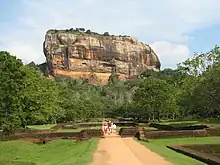
Historical topics
Sports
- Cricket is a huge business in South Asia, with India, Pakistan, Bangladesh and Sri Lanka boasting world class national teams.
- Football (soccer) is not as popular as cricket, but has a niche following in parts of South Asia, especially in the city of Kolkata
- Field hockey is popular in India and Pakistan
Do
Buy
For most countries in the region, bargaining is essential while shopping.
Both India and Pakistan have a long history of carpet manufacture. The region produces a huge range of other arts and crafts items, often at attractive prices because of low labour cost. See the country articles for details.
Eat
- See also: South Asian cuisine
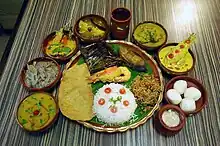
You will not be able to experience the best of South Asian culture until you have consumed its flavourful food. India alone has some of the best cuisines in the world; however, you can find something that will suit your taste buds anywhere throughout the region.
Drink
Tea (chai) is a common beverage consumed throughout the region. In addition, while alcohol is banned or restricted in Muslim communities and some Hindu-majority areas of India such as Gujarat, fruit juices are ubiquitous.
Stay safe
Much of the region is considered a safe place to visit, with the exceptions of Northwest Pakistan close to the border of Afghanistan and parts of Kashmir. Northwest Pakistan is a war-zone and is often controlled by extremist militant groups such as Tehreek-e-Taliban; it should be avoided as much as possible.